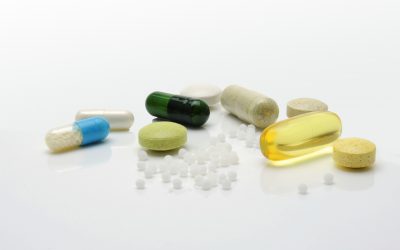The Ins and Outs of Spotting
What is Spotting?
After posting our period basics blog, I realized women need more information on the ins and outs of spotting! I’d wager a guess that most if not ALL of us have experienced pesky spotting at some point in our lives. For those of you who haven’t, the spot is when we experience very light bleeding between our periods. Spotting is much lighter than a normal period and can vary in timing, color, and duration. In practice, I frequently am asked: “is spotting normal?” Sadly, the answer is not so straightforward and is quite complex. Spotting can be an annoyance, and more importantly, it can be a sign that things are going wrong. Causes of spots can range from pregnancy to thyroid issues, to hormonal imbalances, and even to certain cancers. So let me break down this explanation based on timing: spotting before your period, spotting in between your periods, and spotting after your period. Is any of this normal?
Spotting Before Your Period
Possible Causes: deficient estrogen and progesterone, excess progesterone, perimenopause, delayed ovulation, thyroid conditions, stress, miscarriage
Explanation
There are many reasons for spotting before your period. From a hormonal perspective, we need two hormones to work in perfect harmony to ovulate and get our periods on time; those hormones are estrogen and progesterone. Estrogen is secreted at the beginning of your cycle, causing the egg to mature and our uterine lining to thicken as a means of preparing for pregnancy. When we ovulate, progesterone is secreted which works to maintain any possible pregnancy. If we are not pregnant, progesterone and estrogen decline and we get our periods. Any imbalance in this process can lead to spotting right before your period. Usually, this is a combination of low estrogen and low or high progesterone. Specifically, if after we ovulate we don’t secrete enough progesterone, this causes an “early” period, or “spotting” before our periods. On the other hand, if we have very high progesterone, it often won’t decrease when it’s supposed to. Our body gets confused, and attempts to have a period anyway; as a result, we start off with a pseudo-period of sorts, which comes in the form of spots. Often, these imbalances can be linked back to environmental influences such as diet, environmental exposures, and stress levels to name a few. In other cases, however, these imbalances can be linked to an underlying cause.
Spotting Between Your Periods (AKA Mid-Cycle Spotting)
Possible Causes: ovulation, pregnancy, high estrogen, ovarian cysts, PCOS, fibroids, uterine polyps, reproductive cancers
Explanation
Mid-cycle spotting is the most common form of spots we tend to see; and, to no surprise, it has the most possibilities as to why it may be occurring. The most common cause includes ovulation bleeding. Some women do experience minor spotting during ovulation; this is healthy and normal! Another healthy and normal explanation is pregnancy; mid-cycle spotting is often the earliest sign of pregnancy. If there is any possibility you’re pregnant and you’re experiencing mid-cycle spotting for the first time, definitely take a pregnancy test! A not so healthy explanation is that you are in a situation where estrogen is much higher relative to progesterone. As mentioned above, we need these two hormones to work in perfect harmony; they do this by being released at the right times, and in the right amounts relative to each other. When estrogen is high, we get a thicker uterine lining which causes more blood flow during our periods. When progesterone is low, the body is tricked into thinking it’s time to have a period, and voilà, you get spotting! This tends to occur at mid-cycle because this is when we are supposed to ovulate, which should cause a surge of progesterone. With no surge comes spotting. There are many underlying conditions that can cause mid-cycle spotting that are also related to high estrogen and low progesterone states. PCOS, ovarian cysts, endometriosis, fibroids, and uterine polyps are often the cause (or consequence) of an estrogen dominant state. As well, when we are in a state of estrogen dominance, our risk for reproductive cancers is generally increased. If you are over the age of 40 and are experiencing mid-cycle bleeding, please see a doctor to ensure nothing more serious is going on!
Spotting Right After Your Period
Possible Causes: deficient estrogen and progesterone, dominant estrogen state, perimenopause, thyroid conditions, stress, polyps, fibroids, endometriosis, remaining uterine tissue
Explanation
As with spotting before your period, there are many possible causes for spotting afterward too; and as you could probably guess, it has to do with our two favorite hormones becoming disharmonious. Specifically, spotting after your period is caused by either a deficiency of progesterone or estrogen or conversely, an excess of estrogen. When our periods have come to an end, this marks the beginning of estrogen rising in the body to prepare for another possible pregnancy. If estrogen does not rise adequately, we get a slow tapering off of our period that may come in the form of spots. On the other hand, if we have too much estrogen all the time this causes a thicker uterine lining. When our uterine linings become too thick, our periods may not be long enough to get everything out. As a result, we get spotting after our periods as the leftover tissue is still trying to be excreted from the body. Now as mentioned above, there are many underlying causes that could be playing into this. There are also environmental factors that could be causing or contributing to deficient or excess hormone production in the body.
Honorable Mentions
Two other possible causes I have not addressed, but should always be considered are:
- If you’ve switched, come off, or are currently using any form of birth control (this includes Plan B)
- Infections (yes, this includes STDs).
Both of these can and often do cause spotting.
So, IS Spotting Normal?
So to answer the question is spotting normal? Well, unless you are pregnant or ovulating likely not. Unfortunately, there is no way to know whether the spotting you are experiencing is healthy or unhealthy without getting it investigated by a healthcare practitioner. Fortunately, there are a lot of natural options when it comes to correcting hormonal imbalance and improving outcomes for reproductive conditions that cause spotting. It’s important to note that there are many other possible causes of spots that have not been addressed here. If you are regularly experiencing spotting before, between, or after your periods, it is important to get this checked out to ensure nothing more serious is at play! If you have been experiencing spotting and would like more information on what might be causing it and how to stop it, I am here to help!
With love and in health,
Priya
References
I want to help you get there. The key to your fertility lies within you.
Let's Awaken it!
More Reading
Naturopathic Medicine in Fertility
Whether you are just starting to try to get pregnant, struggling with getting pregnant or suffering from recurrent miscarriages, a fertility naturopathic doctor can help you along your fertility journey. Naturopathic doctors are trained healthcare professionals with...
The Role of Melatonin in Fertility
Most of us have heard about melatonin in the context of sleep, as a supplement that can impact our circadian rhythm. However, this hormone also plays an important role in female fertility. What is Melatonin? Melatonin is a hormone made by the pineal gland in...
Simple Tips to Improve Your Chances of Conceiving
It’s easy to get caught up in the minor details of what we could be doing better when trying to get pregnant. This can lead to constant thoughts around the effects that our daily activities have on our chances. This self-criticism can feel overwhelming and...




Share This
Share this post with your friends!